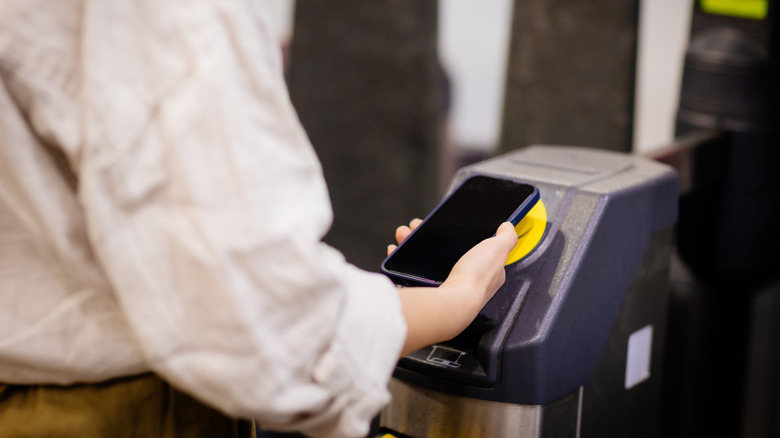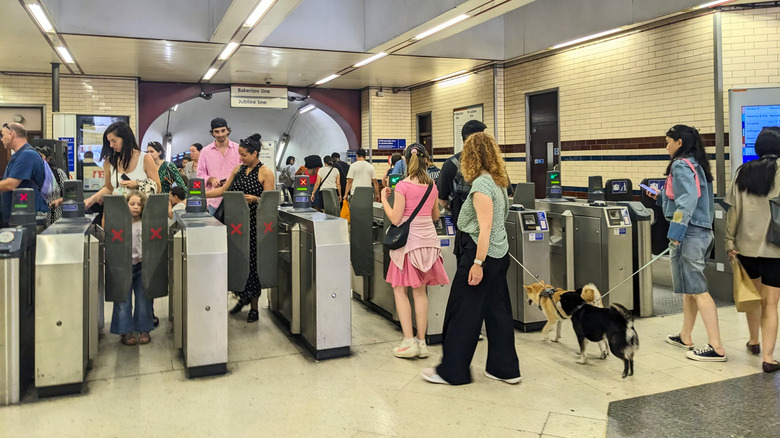The Costly London Underground Mistake No One Warns You About
The London Underground (aka the Tube) is one of the world's most efficient public transport systems, when it's not delayed of course. Around two million people ride the Tube every day, including locals and tourists. It's the fastest way to reach the city's sights and neighborhoods, such as Walthamstow, recently named London's best neighborhood to live in. Travelers can pay for the Tube by tapping in and out with an Oyster card (the city's official public transport card) or with their mobile device or physical credit or debit card. This works great most of the time, but sometimes the ability to use multiple cards and devices can prove very costly.
Accidentally using different payment cards or devices is one of the biggest and costliest mistakes people make when catching the Tube. Known as a device or card clash, this happens when you touch on with one card or device, then touch off (at the end of your trip) with a different one. In 2023, it was happening so frequently that Transport for London (TfL) had to refund the equivalent of over $267,000 in one year.
For an individual traveler, making this mistake could cost upwards of $30 a day depending on the route. TfL has daily caps that allow you to make multiple trips in a day without paying an extortionate amount. One traveler, Paul Harper, ended up paying over $30 extra on a return trip between zones 1-7 after device clashing. The journey would've usually been capped at about $23, but ended up costing him around $56. "I was stunned by how much was taken out of my bank in such a short space of time. One journey from Watford to London and back cost £42, which is ridiculous," Harper said to the BBC.
How to avoid clashing or get a refund
There's really only one way to avoid device or card clashing: make sure you only use one payment method to touch on and off the Tube. This ensures you're charged the right amount and don't get penalized for having an incomplete journey. If you have a physical credit card and its digital version on your phone, you should use either one of them, not both. The device readers may treat your smartphone, smartwatch, and physical card as different payment methods, even if it's the same card.
This approach should be applied for every individual journey and multiple journeys throughout the day. If you use your physical credit card on your first trip, keep using it throughout the day. Don't change to your debit card or to a digital version. If you change cards or devices, you won't benefit from TfL's daily caps. The daily cap for Zone 1, 2, and 3 is about $14, meaning you won't be charged more than that in a 24-hour period no matter how many trips you make. But it won't apply if you're not using the same card or device, so you could end up paying a lot more than necessary.
If you do end up card or device clashing, your money isn't necessarily lost. TfL has issued refunds to overcharged passengers in the past, and the TfL Go app now makes it easier to check your journey history and apply for refunds. Make sure you download this app when visiting London and check your bank statement if you're worried you've been overcharged. Hopefully you can enjoy drama-free rides to memorable places like Hampstead Heath Ponds, London's centuries-old swimming ponds, and Shoreditch, the epicenter of London's art scene.

